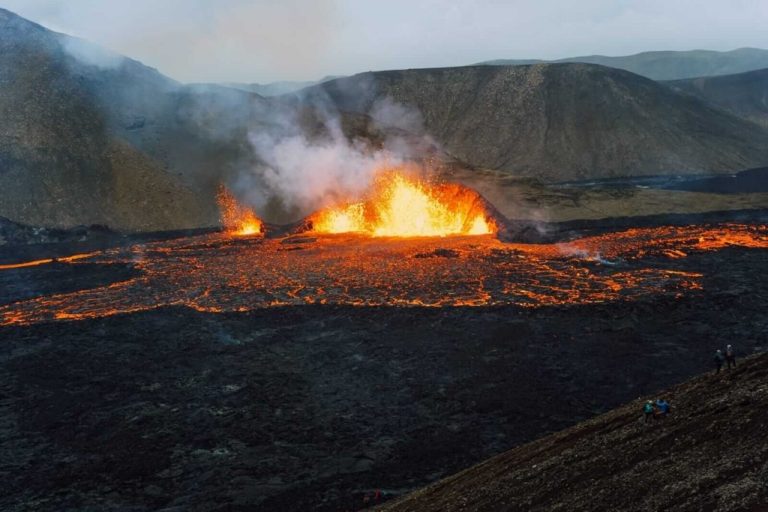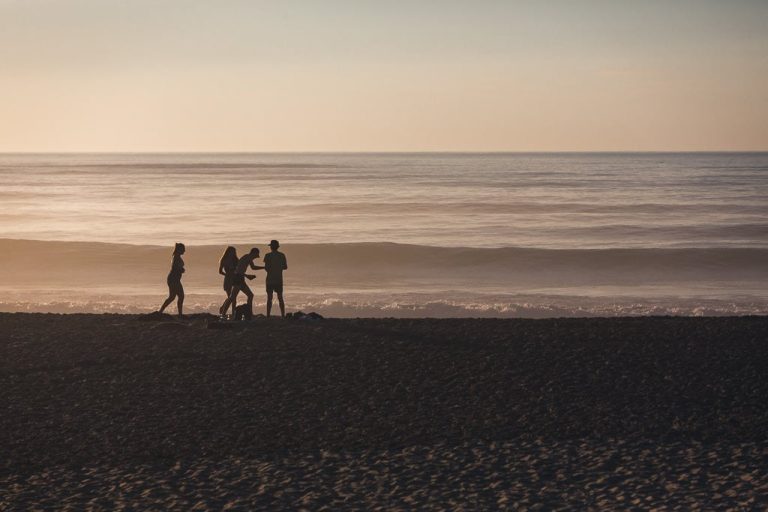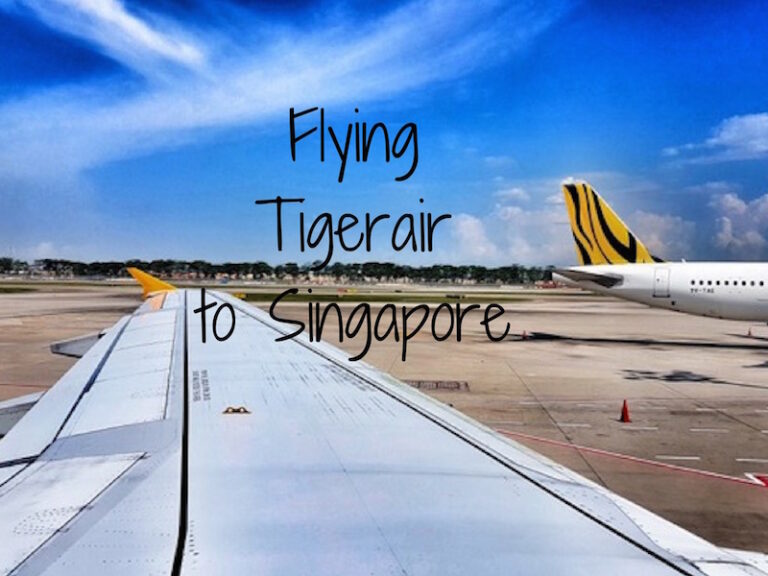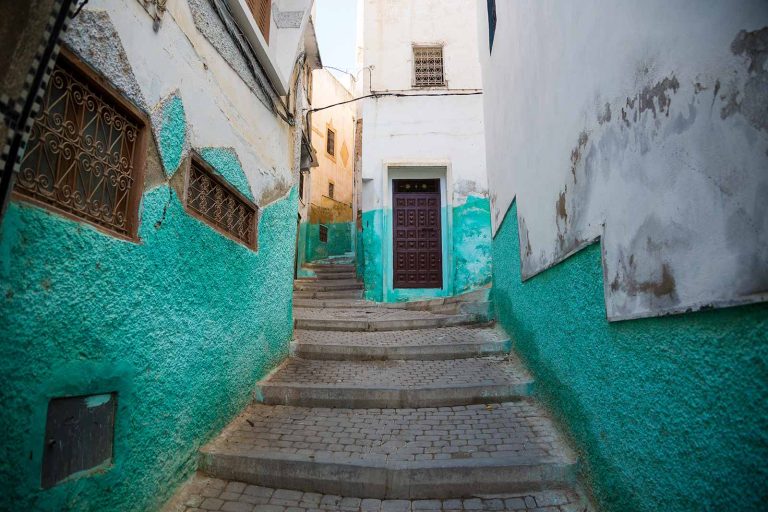Of all the countries that I’ve traveled, Colombia surely has by far the most misconceptions about safety.
The misconceptions go both ways. Some people’s minds are clearly still stuck in the past, associating Colombia only with drug cartels or Pablo Escobar, even though Colombia of today is nothing like it was in the 1990s.
But then there are also those on travel forums or blogs who, in trying to correct the outdated image, will overcompensate way too much. They claim Colombia is ‘completely safe’ or ‘safer than most Western countries’.
This too is unfortunately incorrect. The truth is somewhere in the middle.
To help you prepare for your Colombia trip, let me explain both the good and the bad about safety in Colombia.
(Yeah, get ready for some raw and unfiltered NUANCE!)
Safety in Colombia: what you really need to hear
Before I get lost in the details about safety in Colombia, I think it’s very important to start with the positives. A lot of safety guides skip over this part and so I believe they end up giving a completely wrong impression.
The bottom line is that Colombia is mostly a safe country (with an emphasis on ‘mostly’). You can travel around Colombia just fine, but it does come with a bit of an instruction manual, so to speak.

To be clear: Colombia is an amazing travel destination. Colombians are extremely friendly, the atmosphere is super fun, and you can explore most parts with relatively few worries. Travelers in Colombia are often surprised by just how easy and welcoming it is.
Colombia happens to be one of my top favorite countries out of the 60+ I’ve been. It has some of the most interesting cities in South America, its biodiversity is the world’s second-highest making it incredible for ecotourism, and there is so much variety within Colombia that it’s super fun to travel through. The vibe is great, the latin music is ever-present, and it’s an affordable destination to boot.
Please keep these points in mind while you read about the safety aspects!
A problem with providing safety information is that you always need to be quite detailed. You have to mention everything just in case. But you can quickly get lost in all these ‘helpful details’ which can then begin to overwhelm all the positives.
In Colombia, the many positives definitely outweigh the small negatives, so please don’t hesitate and book your plane tickets. In fact, don’t come back to this page until you have your trip all booked and locked in.
Done?
Alright. Now let’s talk some more.
How Colombia has changed
The main reason why so many people wonder about safety in Colombia is obviously that it has had quite a dark past.
It’s true: for much of the 20th century, Colombia was torn apart by drug cartel violence and a brutal internal conflict that lasted for over five decades (yes, half a century!).
It’s not so strange that many negative associations persist because of this awful history. And if you’re from an older generation, these associations will surely still be etched into your mind.

But Colombia has changed. While it had some of its worst years in the 1980s and 1990s, the situation began to improve. The notorious crime boss Pablo Escobar died in a police raid in 1993. Over time, long-simmering conflicts were resolved. Cities were reinvigorated with new public transit systems and safety slowly improved.
I first travelled in Colombia back in 2013 when it was already being ‘discovered’ by backpackers. Not everywhere was safe at the time, but the general advice was that you were fine so long as you stuck to the main travel trail.
In 2016, the Colombian government signed a peace accord with the FARC rebels, prompting them to lay down their weapons. This finally opened up many other regions for tourism.
When I travelled in Colombia again in 2022, I noticed how it’s being discovered now by regular tourists and not just backpackers. The word is definitely getting out!
While there are still some areas in Colombia with a worse safety reputation, there are much fewer than there used to be.
Just compare this safety map from 2013 (which is from the UK Ministry of Foreign Affairs)…

… to what this same safety map looks like in 2022:
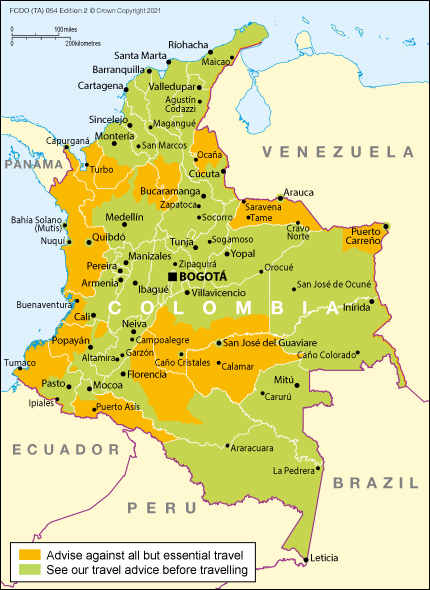
I should mention that virtually all the tourist sites are in the green areas of the country. The orange parts are mostly deep in the impenetrable rainforests along the borders and in the Amazon where very few people go.
In the areas that tourists actually visit, the security situation is really not much different from other popular tourist destinations in South America such as Ecuador or Peru.
Safety precautions in Colombia
Having said this, Colombia is certainly not a crime-free paradise. You should still take heed of travel safety advice for Colombia to ensure your trip will have a lower level of risk.
If you are an inexperienced traveller, be sure to do some searching around for general travel safety tips. Typical advice such as “don’t flash expensive jewellery” or “don’t wander the streets drunk alone at night” are useful anywhere, but definitely in Colombia. If you are already familiar with all the common advice for responsible and safe travel, even better.
Besides the basic precautions, you can also:
- Avoid regions with a bad reputation. You can find these in safety guides or in maps like the one shown earlier. The ‘bad regions’ in Colombia are mostly areas close to the borders with Venezuela, Ecuador, and Panama, or very deep in the Amazon. Please don’t freak out by long textual lists of departments or municipalities that you should avoid, which can seem intimidating at first. Just look at the maps and stay out of the sketchy regions (unless you know what you’re doing). You’ll have instantly made your trip much safer. Yay!
- Do take a bit more care in the cities; don’t show off expensive gear and carry only the cash you need for the day. Ask your hostel or hotel staff if there are any bad neighborhoods, just to be sure. It’s always good to maintain some situational awareness; don’t walk around the streets with your phone in hand without paying any attention, for example. There is an expression in Colombia, “no dar papaya”, which basically means “don’t make things easy for a criminal”. This is always good advice to live by.
- Inside the cities and particularly at night, be sure to take official taxis (or use ride-hailing apps such as Uber, Cabify, Beat, or Didi which are safe). Official taxis can be found at taxi stands. Don’t get into a random car you’ve hailed on the street.
- When you need to take money out, it’s worth doing so inside a bank or inside a shopping mall during the day where there are plenty of cameras and security staff around. Then stash most of your cash at your accommodation until you need it.
- Do take extra care in the nightlife (in the big cities) if you will be going out. Go out together with some friends and don’t accept drinks or cigarettes from strangers. Drugging/spiking is sadly known to occur; it’s important to know for women, but also for men who are sometimes ‘seduced’ by a Colombian woman who ends up being a criminal. The nightlife is super fun, by the way, especially if you like Latin music like salsa, but it’s good not to be naive and to keep your wits about you.
By following safety advice, you can have a fun and much more worry-free trip in Colombia.
Travelling in the areas of Colombia with a better safety reputation will already make a huge difference. Focus on the destinations that get recommended on blogs, that appear in published travel guides, or that many people love to go to. These are sure to have a relaxed atmosphere — in fact, they’ll probably make you wonder what the fuss was all about.
You absolutely won’t miss out by avoiding the regions with a bad safety reputation. I travelled in Colombia for 3 months (even going a fair bit ‘off the beaten path’) without ever venturing into the more questionable areas. The bad regions are irrelevant to 99% of visitors anyway as they will simply not end up there.
Do you need travel insurance for Colombia?
Insurance is not a requirement to enter Colombia and having travel insurance won’t in itself keep you safe. However, it does cover you financially should you be so unluck to face certain issues during your trip, so I do recommend getting travel insurance for a trip to Colombia.
In situations like theft, delay, sickness, or accident it means you will be covered financially. You will also have a hotline (or a support app) to use for advice in these situations.
I personally use and recommend Heymondo, which offers great value and good customer service. You can get a quote for your Colombia trip here. If you are a little adventurous, it’s good to know they’ll cover actitivies such as ziplining, kayaking, paragliding, and much more.
While certain aspects of safety you can’t ultimately control, having insurance is at least one box you can easily tick that will give you increased peace of mind.
Insurance for Colombia
Travel Advice
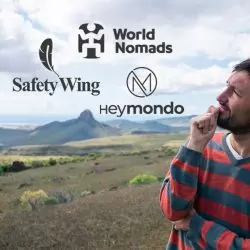
Travel insurance will cover you for theft, medical expenses, cancellation, and more. Heymondo offers great coverage, COVID-19 included, zero deductibles, and an app with 24/7 assistance & doctor chat.
Are the cities in Colombia safe?
Mostly, yes, but as always it depends. Some cities, like Cali and Barranquilla, don’t really have the best reputation. But the key cities that most tourists want to visit — like Bogota, Medellin, and Cartagena — are safe in most areas and certainly safe enough to do your typical sightseeing activities.
As in many cities around the world, there can be good neighborhoods and bad ones. Be sure to ask at your hotel or read your travel guide to know more.
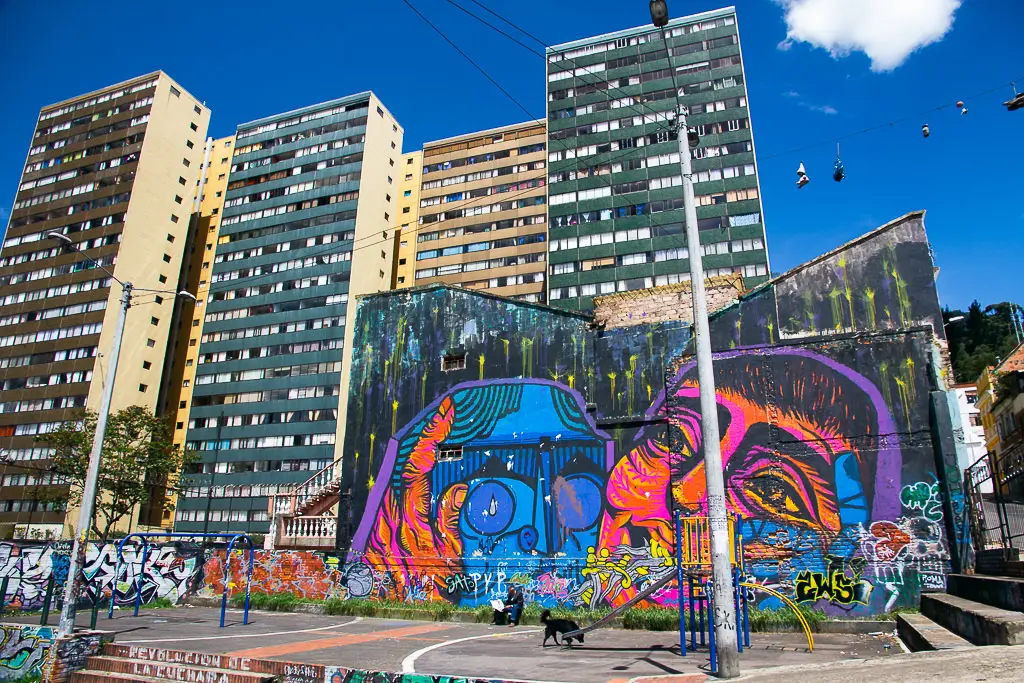
For example, in the beautiful colonial city of Cartagena, all the tourist areas have a high level of safety, making Cartagena rather worry-free overall. The old city is more or less on an ‘island’ and this entire area is very safe, as is the Miami-like area of Bocagrande. But if you go into the suburbs the situation may be different and there it’s usually advised to take taxis.
That said, I can tell you that you’re 99.9% likely to spend all your time in the tourist areas of Cartagena anyway. If you are planning on doing anything very different from the typical tourist activities, doing a quick check regarding the different areas of a city will clue you in easily.
By the way, the places where I always felt safest in Colombia were the smaller towns, the nature resorts, and national parks. Safety is barely on my mind in these places. The cities are a bit different and may require a bit more care in my opinion.
To give you an idea, in the old town of Bogota or El Centro in Medellin, I usually like to keep my camera inside my backpack until I need it. In smaller towns or on nature trails, the camera is out most of the time as I feel very little reason to hide it.
What about dating or nightlife?
To be honest, the nightlife is a bit of a separate issue from doing normal tourist activities during the day. If you’re going to bars and clubs in Colombia, it’s wise to maintain a bit more awareness. This is mainly because people tend to be off guard or do stupid things when drunk or on drugs.
The most important tip is really this: only drink what’s come from the bar and went straight into your hands. Spiking is a thing in Colombia so don’t accept drinks or cigarettes from strangers. This is a safety concern for women but also for men. There have been reports of men getting drugged by Colombian women and waking up the next morning in their hotel room with all their belongings stolen.
If you go on Tinder dates be careful and maybe don’t invite a stranger into your hotel room. If you really need to get busy, go to a “love hotel”. Since a lot of Colombians live with their families (i.e. with not much privacy) it’s normal for them to go to these places to have some fun. They’ll know where to find them.
Don’t go overboard with drinking and take taxis or use ride-hailing apps to get home. Honestly a lot of the (still rare) safety issues I hear of from the travel community for Colombia relate to the nightlife. Don’t let that make you paranoid though: I loved going out in Colombia and even got invited to local parties. The salsa dancing scene is amazing. Just stay smart when going out.
Is Colombia safe for Americans?
It’s maybe an odd question, but I do see it pop up in my search queries a lot, so I wanted to answer it.
There aren’t any special reasons for Americans to be safe or unsafe in Colombia — it’s just like any other nationality traveling there. So yes, if you take the normal precautions, it’s safe for Americans.
Perhaps the reason this question comes up a lot is the US State Department safety report for Colombia. Their reports are known to sound really intense and paranoid.
Maybe this is just me speaking as a European but I think the US State Department safety reports are often really not very balanced or fair. Perhaps there is still often a general perception in the US (fed by sensationalized news media) that anywhere that isn’t The United States of America™ is surely a wilderness filled with savages and/or terrorists. The way the State Department reports are written just doesn’t reflect the actual experience of going there, especially as a tourist.
I recommend also consulting the travel advisories of the UK or Australia, among other countries, which are a lot more level-headed.
Final thoughts about safety in Colombia
Having traveled for 3 months in Colombia, my main thought is that I wish more people realized how amazing this country is.
I’ve had nothing but positive experiences in Colombia. Mind you, this post is not just based on my own personal experiences. After all, 1 is not a great sample size. I do keep my ear close to the ground in the travel community, consult official resources, and talk with as many locals as I can during my trips. For this article, my goal was to form a more complete picture than just one person’s experience.
Still, based on my subjective view, I would rate the safety in Colombia as basically the same as in other popular destinations in Latin America such as Ecuador, Peru, or Costa Rica. If you’re fine with those countries, you should be fine doing the normal tourist stuff in Colombia too.
That goes especially if you’re using public transport (buses, planes, etc.) or tours to move between known tourist destinations and you’re not planning some kind of wild motorbike trip through random remote parts of Colombia that no one has heard of.

People’s perceptions of Colombia rarely match the reality of travelling there. Most who travel there agree that it doesn’t feel dangerous, just a little rough around the edges at times.
I’ve been to places where I had to get inside the fenced perimeter of my hotel as soon as it got dark, places where I could only walk for 10 minutes down a beach because ‘after that it gets too dangerous’, or where private guards armed with shotguns had to secure local businesses. NONE of these were in Colombia. (In case you’re curious, they were in Honduras, South Africa, and The Philippines).
So is Colombia an ultra-safe country like Japan or Norway? Hell no. Is it among the truly unsafe countries of the world? Also no. It’s just somewhere in the middle. Yet in nearly all my time in Colombia, I’ve felt safe enough not to have worries front of mind at all.
But like I said in the beginning, merely discussing safety can already affect our perception, as negative statements make a bigger impression than positive ones. (Thanks a lot, human evolution!)
After reading his post, perhaps what you could use is a little palette cleanser. I love the hiking videos by Kraig Adams which are always so peaceful and tranquil… and he did one in Colombia. Watch this to get your nerves to calm 😉
[embedded content]
Then close all those other tabs you surely have open for “safety in Colombia” and know that you’ll have done the research that you needed to do. Be safe and above all enjoy your trip in Colombia!
Some links may be affiliate links, meaning I may earn commission from products or services I recommend. For more, see site policies.
Posted OCT 11, 2022 (Updated Oct 11, 2022)
